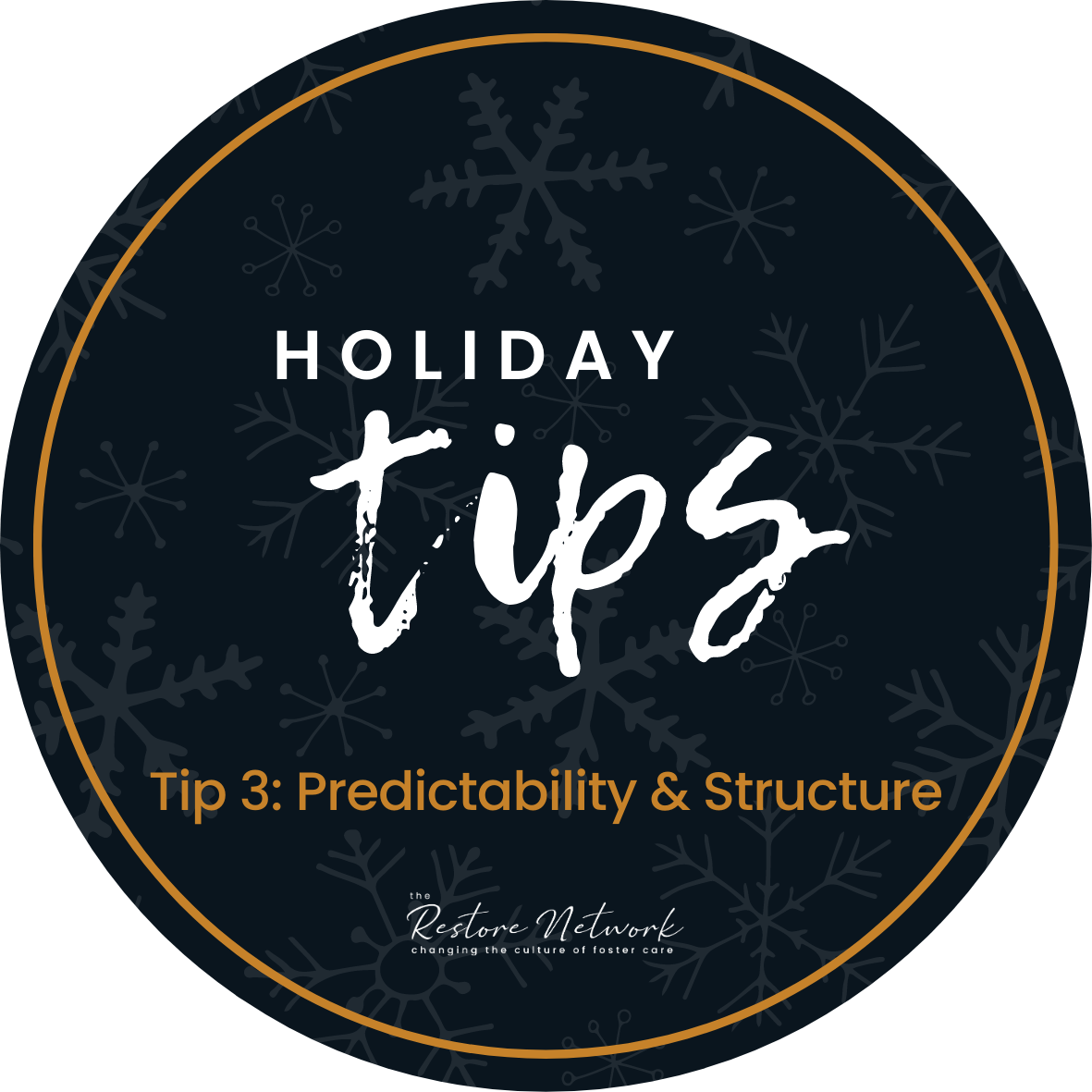by Ashley Bennett, Director of Trauma-Informed Care
Listen I know. It’s getting harder to predict what’s going to happen next in 2020 and our sense of perceived control—gone, right? What will the holidays even look like this year??
We all do better when we think we know what is happening in our lives. I bet you’d like to have a bit of the control back that 2020 took from you. I bet if you knew how long this was going to last & how it would all end, you’d take a deep breath and move through it easier. You’d have a sense of perceived control; you’d have some predictability.
Foster families, does this all sound a bit familiar? 2020 is a look into the lives of our children.
Unpredictable. Confusing. Lots of changes. A lot to grieve.
This is why life can be so extra tricky for them. Imagine not knowing where your parents are or if you’ll see them again. Wondering if you’ll stay in this foster home or if you’ll move again. Thinking, how will all of this end for you?
I can’t force 2020 to give you back your sense of normalcy this holiday season. But there are some things we can do as we head into the holidays that will help you and your child experience a sense of felt safety; and one of those things is increasing predictability and structure where we can.
Here are some ideas:
1. Maintain your current family rhythm through the holidays as much as you can. I know, I know. Your schedule has changed so many times, what even is normal right now? I get it. But keeping your predictable daily rhythm—or making a new one if life calls for it—can go a long way for you and your child to know what to expect. And when we know what to expect, we are less likely to fear.
Christmas break (and pandemics!) can naturally lead to a changed routine in your home and more unstructured time. But both these things don’t work for our children very well. They need to know what is coming next and they need to know what to expect. It helps calm the fear centers of their brain which are more easily activated because of the experiences they had before they came to you. So, ask yourself how you can keep a similar schedule for your family through the holidays, so your kids know what to expect. Same bedtime? Same wake-up time? Same mealtimes?
2. Make a schedule. For some of you, the idea of a schedule for your children hasn’t been a tool you’ve used before. You prefer the spontaneity of doing whatever you feel like in the moment. If that works well for your family-hooray! That is amazing and you should just keep doing that. But for most foster families, this lifestyle doesn’t work for our children and contributes to many of their anxieties and behavioral challenges.
In my home we have a giant whiteboard in the hallway and in the mornings I write down a rough estimate of how our day is going to flow. Currently, we are in a season of life where we don’t need a structured schedule with set times, so for us it’s more like a short summary of plans. But years ago, that wouldn’t have worked for us and two weeks home together for Christmas break would have been a nightmare. Back then, we needed a posted schedule with a lot more structure and listed times-so that’s what we did. Having a schedule gives your child felt-safety, which is a great gift for your children this Christmas!
3. Communicate the schedule with your children. As you consider which parts of your current schedule you can replicate through the holidays and which parts you’ll need to change, don’t forget that a schedule in your head doesn’t help a child feel safe until its communicated to them. As we’ve said, our children thrive best in predictability and structure. If you have a plan for Thanksgiving break, tell your children. Better yet, write it down and post it in your house. Use pictures instead of words for younger children. Sit down and have a family meeting and talk about the ways you can fill your time together this holiday season. Make a “holiday bucket list” and place it next to the schedule. If something doesn’t work, move the schedule around until it does. You’ll find something that works best for your family. But the most important piece, is that our children understand the plan.
4. Use countdowns. The concept of time is hard for children to understand. A day seems like a week to them! If your children are anxious or excited about the holidays (guess what-the symptoms of both these things look the same!), consider making a visual tool to help them. Find an app on your phone, craft a chain link countdown, or use an advent calendar to help your child with his anxious anticipation.
Our children thrive in structure, but this year it might even help you, too!
Next week’s tip: Share control.
